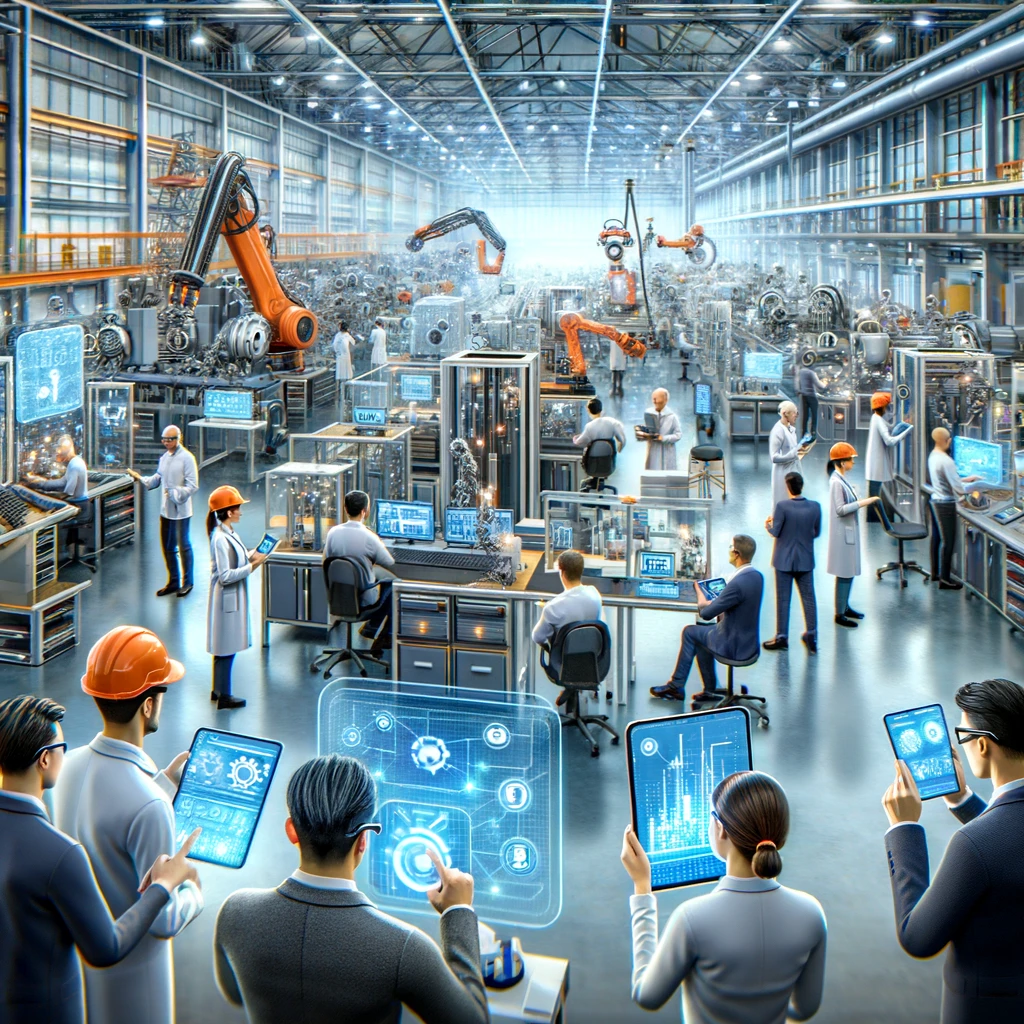- お役立ち記事
- Realizing the Smart Factory The Evolution of Digitalization in Manufacturing

Realizing the Smart Factory The Evolution of Digitalization in Manufacturing

The manufacturing industry has experienced tremendous changes over the past few decades. From heavy reliance on human labor and mechanical machines to increasing digitization and automation, production processes have become more efficient and data-driven than ever before. This evolution represents manufacturers’ realization of the smart factory – a vision of industry 4.0 that uses the Internet of Things (IoT), advanced analytics, and digital technologies to optimize operations.

While many factories still rely on traditional operations today, an increasing number are taking steps to transition to a smart factory model. They are digitizing assets, collecting and analyzing production data, connecting machines to central systems, and automating processes that were previously manual. This allows them to gain insights, monitor performance in real-time, and adapt production as needed from a centralized control room. Early adopters are already reaping significant benefits including reduced costs, minimized downtime, improved quality control, faster decision making, and enhanced collaboration across departments and global operations.
One of the first areas that many manufacturers are digitizing is their plant floor equipment and machinery. Industrial IoT sensors and edge computing devices are being installed on production lines, robots, conveyor belts, and other core assets to collect critical operational data like temperature, vibration, energy usage, downtimes, and asset performance metrics. This data is then fed into centralized manufacturing execution systems (MES) or industrial IoT platforms in real-time for analysis. Leveraging advanced analytics capabilities like machine learning, manufacturers can detect anomalies and issues, predict maintenance needs, optimize processes, and improve asset utilization.
Digital twins – virtual replicas of physical assets, processes and systems – are also being widely adopted to help optimize operations in a non-disruptive, low-risk manner. Digital twins aggregate sensor data streams with 3D CAD models, production schedules, maintenance records and more to form dynamic digital models. Engineers and operators can run simulations on these digital twins to test new processes, fine-tune production configurations, train workers virtually and more before implementing changes on the actual factory floor. This helps increase efficiency, minimize waste and reduces risks from trial-and-error experiments on live production assets.
Advanced robotics like collaborative robots or “cobots” are another key enabler of smart manufacturing. Cobots can work alongside human workers safely without the need for expensive safety guards and fences. They take over manual, repetitive and sometimes hazardous tasks like assembly, material handling, inspection and packaging. Meanwhile, autonomous mobile robots (AMRs) are used for functions like transporting materials within factories and warehouses. All these robots connect to central IoT platforms and industrial control systems to streamline operations. They optimize material and information flow using dynamic data-driven routing instead of following fixed paths.
Advanced analytics is also driving improvements on the human level. Wearable devices, often combined with augmented or virtual reality interfaces, provide workers with step-by-step instructions, access to product documentation and assistance from remote experts. This ensures procedures are followed correctly and minimizes training requirements. It also gives managers real-time visibility into bottlenecks and issues on the shop floor for more proactive decision making. Computer vision combined with machine learning helps automate quality inspection and enables 100% inspection of every product manufactured.
Cloud computing plays a vital role in smart factories by providing scalable, flexible and secure infrastructure to support advanced analytics and modeling needs. Manufacturing applications and data that were previously isolated are now hosted securely on private or hybrid cloud platforms. This enables seamless data-sharing not just within individual plants but across entire value chains and ecosystems. Remote access to factory systems further facilitates monitoring and management from anywhere. 5G and edge computing will accelerate this cloud-driven transformation by enabling even lower-latency data collection and processing at the tactical edge.
Overall, as manufacturers progress on their Industry 4.0 journeys, the smart factory vision is gradually becoming a reality. Those who adopt digital technologies early and optimize processes using real-time data and analytics will be best positioned to reap rewards like agility, sustainability and competitive advantages. While challenges remain around skills, legacy systems integration and security, the rapid pace of innovation ensures the smart factory evolution will only accelerate. The future of manufacturing looks set to be far more predictive, autonomous, collaborative and efficient than ever before.
 資料ダウンロード
資料ダウンロード
QCD管理受発注クラウド「newji」は、受発注部門で必要なQCD管理全てを備えた、現場特化型兼クラウド型の今世紀最高の受発注管理システムとなります。
 NEWJI DX
NEWJI DX
製造業に特化したデジタルトランスフォーメーション(DX)の実現を目指す請負開発型のコンサルティングサービスです。AI、iPaaS、および先端の技術を駆使して、製造プロセスの効率化、業務効率化、チームワーク強化、コスト削減、品質向上を実現します。このサービスは、製造業の課題を深く理解し、それに対する最適なデジタルソリューションを提供することで、企業が持続的な成長とイノベーションを達成できるようサポートします。
 製造業ニュース解説
製造業ニュース解説
製造業、主に購買・調達部門にお勤めの方々に向けた情報を配信しております。
新任の方やベテランの方、管理職を対象とした幅広いコンテンツをご用意しております。
 お問い合わせ
お問い合わせ
コストダウンが利益に直結する術だと理解していても、なかなか前に進めることができない状況。そんな時は、newjiのコストダウン自動化機能で大きく利益貢献しよう!
(β版非公開)


